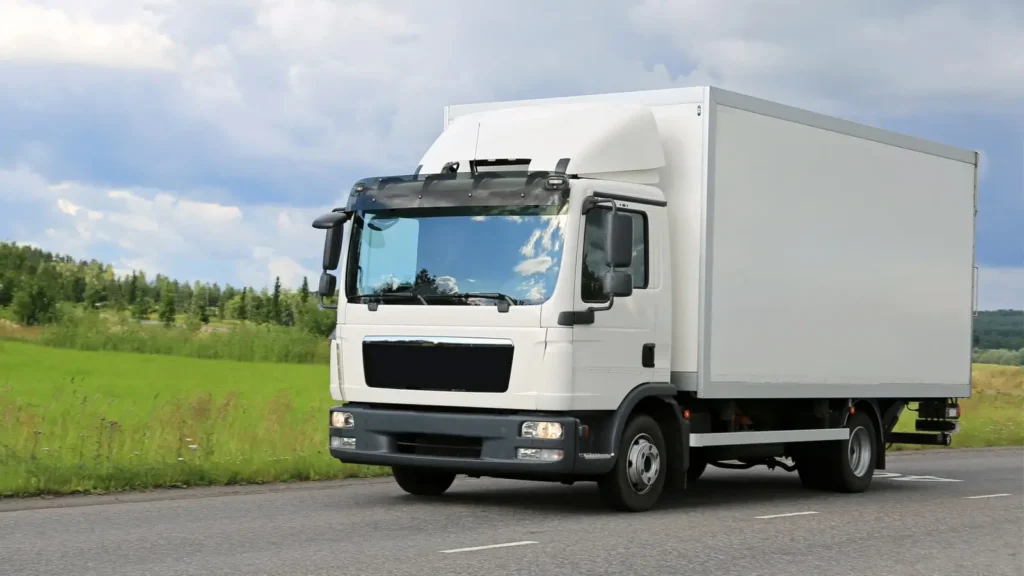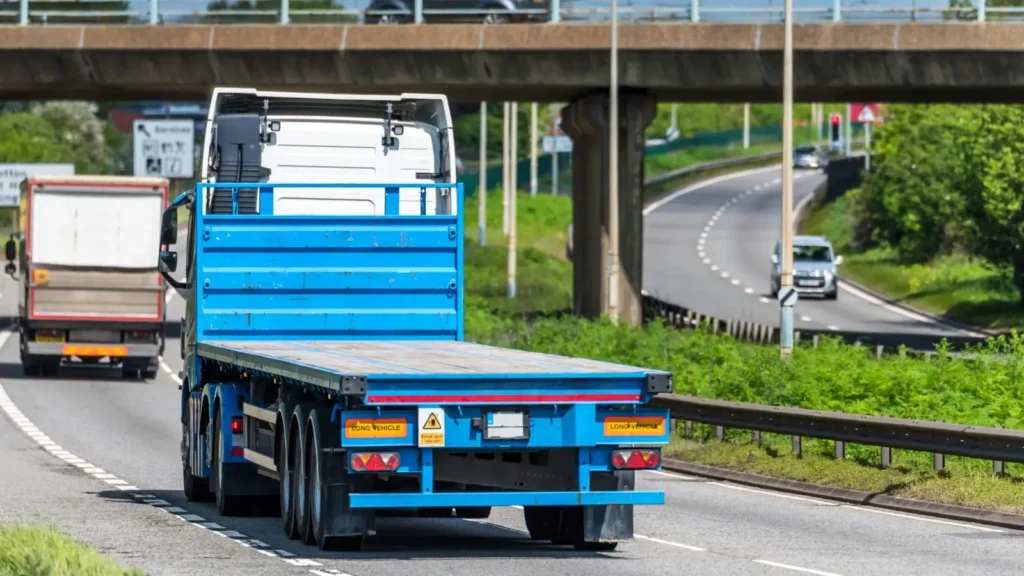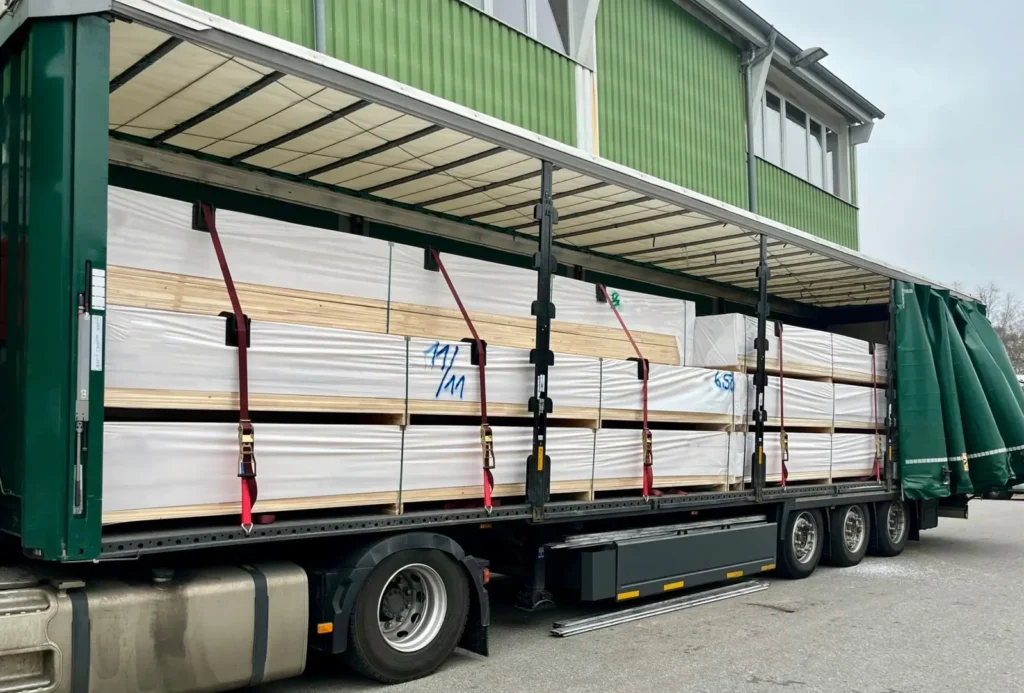Choosing the right lorries for your fleet is an important decision for haulage companies.
Whether you’re moving general freight, oversized loads, or temperature-sensitive goods, knowing the legal lorry sizes and weight limits will your haulage operations compliant and efficient.
In this guide, we’ll cover everything from standard truck dimensions to axle-based weight limits and trailer types. We’ll also explain how different types of lorry affect fuel efficiency, emissions, and load capacity.
What we’ll cover
Understanding lorry dimensions
Lorries in the UK come in various shapes and sizes, each designed for different types of freight.
Understanding the different lorry dimensions helps fleet operators and transport managers choose the best vehicles for their needs.
What defines a lorry?
A lorry is any large goods vehicle (LGV) designed to transport freight. The UK classifies these vehicles based on weight, with anything over 3.5 tonnes falling into the HGV dimensions category.
Lorries can be rigid, flatbed or articulated. Rigid and flatbed lorries have a single frame, while articulated lorries feature a separate cab and trailer.
The choice between them depends on cargo type, route restrictions, and load flexibility.
Standard lorry measurements in the UK
Legal truck sizes in the UK are strictly regulated. Standard limits include:
| Dimension | Limit |
| Maximum length | 12 metres for rigid lorries. 16.5 metres for articulated lorries. 18.75 metres for drawbar combinations. |
| Maximum width | 2.55 metres |
| Maximum height | No legal limit, but most bridges and infrastructure are built for vehicles under 4.95 metres |
| Weight restrictions | Dependent on axle configurations, with a maximum gross vehicle weight of 44 tonnes for standard articulated lorry dimensions. |
Some exceptions apply for specialised vehicles, such as abnormal loads and longer semi-trailers (LSTs), which are currently on trial in the UK.
Types of lorries
Different types of lorry serve different transport needs. The three main categories are rigid, articulated, and flatbed trucks.
Rigid lorries

Rigid lorries are single-unit vehicles where the cab and cargo area are fixed together. They are commonly used for local and urban deliveries.
They range from 7.5-tonne vehicles to 26-tonne models with three axles. Their size makes them easier to manoeuvre in tight spaces but limits overall load capacity.
Articulated lorries

Articulated lorries (or “artics”) have a separate cab and trailer, allowing greater flexibility in load handling. The standard artic lorry length is 16.5 metres, but LSTs can be up to 18.55 metres.
These vehicles are used for long-haul transport, carrying large loads across motorways. Their ability to detach trailers also makes them ideal for freight forwarders managing multi-leg journeys.
Flatbed trucks

Flatbed trucks have an open trailer bed, making them ideal for transporting large or irregularly shaped goods. They are commonly used in construction and heavy industry.
Since they lack sidewalls, securing cargo properly is very important. Operators must follow strict load-securing regulations to prevent shifting during transit.
Legal size and weight limits
All lorry types in the UK must comply with legal restrictions on length, width, height, and weight. These rules protect road infrastructure and improve safety for all road users.
Maximum length, width, and height regulations
The UK follows EU regulations for most HGV dimensions. The maximum width for any lorry is 2.55 metres, while the length varies depending on vehicle type:
- Rigid lorries: 12 metres
- Articulated lorries: 16.5 metres
- Drawbar combinations: 18.75 metres
Height limits are not legally set, but most UK infrastructure is built for vehicles under 4.95 metres. Operators should check bridge heights before planning routes.

Weight restrictions based on axle configurations
Weight limits depend on axle configurations, with maximum limits as follows:
- Two-axle rigid lorry: 18 tonnes
- Three-axle rigid lorry: 26 tonnes
- Four-axle rigid lorry: 32 tonnes
- Four-axle articulated lorry: 36 tonnes
- Five or six-axle articulated lorry: 44 tonnes
Here’s a full breakdown by lorry type and axle configuration:
| Vehicle Type | Axle Configuration | Maximum Gross Vehicle Weight |
| Rigid Vehicle | 2 axles – smaller lorries | 3.5 – 7.5 tonnes |
| 2 axles – larger lorries | 7.5 – 18 tonnes | |
| 3 axles | 26 tonnes | |
| 4 axles | 32 tonnes | |
| Articulated Vehicle | 3 axles (1+2) | 26 tonnes |
| 5 axles (2+3) | 40 tonnes | |
| 6 axles (3+3) | 44 tonnes | |
| Drawbar Combination | 4 axles (2+2) | 36 tonnes |
| 5 or 6 axles | 40 – 44 tonnes |
Axle spacing affects road wear, so hauliers must consider weight distribution when selecting a vehicle. Overloaded axles can lead to fines, mechanical strain, and increased HGV brake monitoring requirements.
Standard trailer specifications
Trailers vary in size, design, and function. Choosing the right trailer impacts loading times, fuel efficiency, and route planning.
Typical dimensions of standard trailers
Most articulated lorries use one of the following standard trailers:
- Curtain-sided trailers: 13.6m long, 2.5m wide, 4.2m high. Suitable for general haulage.
- Refrigerated trailers: Similar to curtain-sided but insulated for temperature-sensitive goods.
- Flatbed trailers: No sidewalls or roof, commonly used for heavy machinery or construction materials.
- Box trailers: Fully enclosed, offering security for high-value loads.

Variations in trailer types
Beyond standard trailers, operators may use:
- Tippers: Used for aggregate and bulk materials.
- Walking floor trailers: Like tippers, these are used for aggregate and bulk transport.
- Tanker trailers: Designed for liquid transport, from fuel to food-grade liquids.
- Skeletal trailers: Built for container transport, commonly used in freight exchange networks.
The right trailer choice depends on cargo type, destination, and loading requirements.
Choosing the appropriate lorry
Selecting the right lorry goes beyond just truck sizes. Cargo type, route restrictions, and fuel efficiency all play a role.
Factors to consider for different cargo types
Different types of lorry suit different goods. For example:
- Perishable goods need refrigerated trailers.
- Loose aggregates require tippers.
- Palletised freight is best suited to curtain-sided or box trailers.
- Oversized loads often need flatbeds with special load-securing measures.
Choosing the wrong lorry can lead to compliance issues, loading inefficiencies, and extra costs such as higher haulage insurance premiums.

Impact of lorry size on transportation efficiency
Larger lorry sizes carry more freight per trip, reducing overall journey numbers. But they also face restrictions on urban access, require higher fuel consumption, and may need special driver risk assessments.
Smaller lorries are more flexible but may not be cost-effective for long-distance hauls. Striking the right balance is essential for finding haulage carriers that match business needs.
Environmental and compliance considerations
UK haulage companies must comply with environmental regulations, particularly regarding emissions. This is an increasing focus as cities introduce clean air zones.
Euro emissions standards
The Euro emissions standards set limits on pollutants from diesel engines. The latest standard, Euro 6, applies to all new HGV dimensions and affects access to low-emission zones.
Hauliers operating older vehicles may face restrictions or additional charges. Upgrading fleets can reduce long-term costs and improve compliance with urban emissions rules.
Conclusion
UK haulage companies must consider lorry sizes, legal restrictions, and operational needs when selecting vehicles. Whether you’re running a fleet of HGVs or even a combined haulage and courier van fleet, the right vehicle choice affects cost, efficiency, and compliance.
Keeping up with legal requirements, emissions rules, and industry trends helps businesses stay competitive while operating safely on UK roads.
Lorry size FAQs
What size lorry is Class 1?
A Class 1 lorry, also known as a Category C+E vehicle, is an articulated lorry with a detachable trailer. These vehicles have a maximum artic lorry length of 16.5 metres and can weigh up to 44 tonnes.
Class 1 lorries are commonly used for long-haul transport and are a popular choice for freight forwarders managing large loads across the UK and Europe. To drive one, you need a Category C+E licence, which requires passing an HGV driving test after becoming a HGV driver.
What size is a Class 2 lorry?
A Class 2 lorry, or Category C vehicle, is a rigid lorry with a fixed cab and cargo area. Depending on the axle configuration, these vehicles can be up to 12 metres long and weigh up to 32 tonnes.
Class 2 lorries are commonly used for regional and urban deliveries, including retail distribution and construction transport. Drivers need a Category C licence, which allows them to operate large rigid vehicles but not articulated ones.
What category is an 18-tonne lorry?
An 18-tonne lorry is covered by the Category C (Class 2) licence. These rigid lorries typically have two axles, making them suitable for city and regional deliveries.
Since 18-tonne lorries do not have a separate trailer, they do not require a Category C+E licence. However, drivers still need an operator licence if they run a business using these vehicles for commercial haulage.
What size lorry can I drive on my licence?
The size of the lorry you can drive depends on your licence category:
Category B (standard car licence) – Allows you to drive courier vans up to 3.5 tonnes.
Category C1 – Covers rigid lorries between 3.5 and 7.5 tonnes, often used in courier fleet operations.
Category C (Class 2) – Permits driving rigid lorries over 7.5 tonnes, up to 32 tonnes.
Category C+E (Class 1) – Allows driving articulated lorries up to 44 tonnes.
If you’re unsure which category your licence covers, check with the DVLA before applying for work or booking a driving test. Regular driver risk assessments are also recommended to maintain safe and legal operations.




